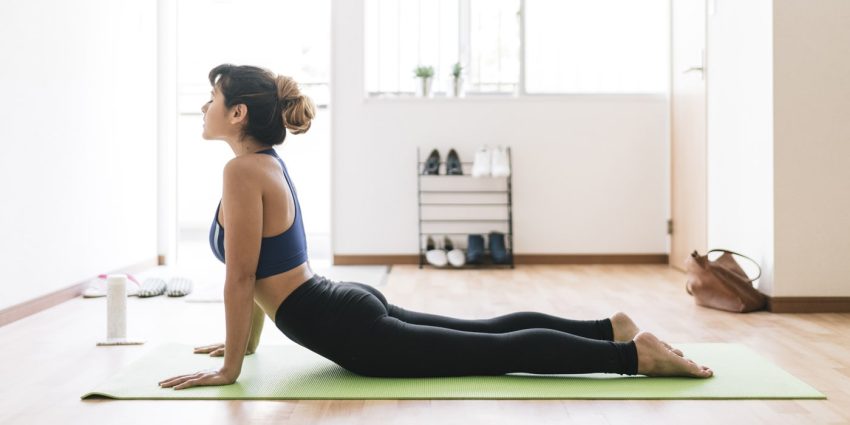Lower back pain is an ongoing issue for many people, affecting everyday activities and the overall quality of life. Although getting medical advice is essential to ensuring proper diagnostics, physical therapy is an approach that is proactive in managing discomfort and easing it. Let’s explore some efficient exercises suggested by physical therapists throughout Australia to treat lower back pain and improve flexibility, strength, and mobility.
Pelvic Tilts
Pelvic tilts are a key exercise frequently recommended by physical therapists in order to treat lower back discomfort. They can be used as a base to strengthen the muscles of the abdomen and lower back, which play an important part in supplying stability and support for the spinal column. This easy, yet efficient, exercise can easily be incorporated into your routine.
For this exercise, lay on your back, with your knees bent and your feet lying across the flooring. The next step is to tilt your pelvis up and pushing your lower body into the floor, then release. This gentle motion can help build the core muscles and improving spinal alignment and posture.
Bridge Pose
The bridge pose is a effective exercise to strengthen the muscles in those in the back of your legs, lower buttocks and the thighs. Start by finding a space that you can lay in a reclined position, for example an exercise mat or cushioned flooring. Bend your knees and set your feet in a hip-width space, making sure they are securely planted on the floor. Relax your arms against your body, the palms facing down, ensuring security and stability.
Engage those core muscles gently pulling your navel toward your spine. When your core is in a good position by pressing firmly against the heels while you slowly move your hips upwards toward the ceiling. Imagine forming a straight line stretching from your shoulders down to your knees, maintaining a slight curve in the lower part of your back.
Cat-Cow Stretch
The cat-cow stretch is a relaxing yet effective way to improve flexibility in the spine. It also provides relief from lower back pain. Begin by placing both knees and hands, using hands directly under the shoulders and knees placed under the hips.
When you breathe in bend your back, allowing your belly to drop to the floor while you simultaneously raise your tailbone and head towards the ceiling, mimicking the cow’s posture. When you exhale, enlarge your spine by pulling your chin into your chest, and then draw your belly button towards the back. You can effortlessly transition between these two positions, while synchronizing your breathing to create an easy stretch.
People with scoliosis are able to practice this movement, but they must be aware of the curvature of their spine and stay clear of excessive twisting or arching which can cause discomfort. If you’re planning to incorporate this workout in your daily routine, you should speak with a scoliosis expert in Brisbane to get more information regarding how to safely do these exercises.
Knee-to-Chest Stretch
The knee-to-chest stretch is an easy but essential part of your exercise routine. Start by lying back on your stomach with your legs stretched out. Relax one knee toward your chest while keeping your other leg straight or bent if it is more comfortable. Keep this posture for 15-30 seconds, and then switch legs. This stretch can help lengthen the muscles in the buttocks and lower back while enhancing flexibility and reducing stiffness.
Bird Dog Exercise
The exercise for the bird dog targets the core stabilization and balance, while activating muscle groups in lower back as well as hips. In order to master the exercise, place you in the identical position you’d use to do the stretch of the cat.
It is the next thing to do: move one arm forward, and then the other leg back while maintaining an even line between fingertips and toes. For a short time, stop and then return to the starting position prior to moving to the other side. Concentrate on keeping your spine straight and avoiding an arch or a rounding of the back.
Wall Sits
Wall sitting is a fantastic method to strengthen the lower part of your body, including your hips and lower back muscles and the thighs. Place your back against the wall. Then, you can ease into a sitting position, with your knees bent at a right angle, and your thighs aligned with the floor.
Maintain the position for 20-30 minutes, and then slowly rise up. Repeat the exercise several times slowly increasing the duration as your strength increases. Wall sitting can help improve your posture, stability and endurance of the lower back, which may help alleviate lower back pain.
Conclusion
Incorporating these workouts in your daily routine under the supervision of a certified physical therapist could help reduce and manage lower back discomfort. Be sure to begin slowly, listen to your body and seek out professional help in the event of chronic or more severe symptoms.
In addition, If you’re interested in learning more about straightening your teeth, go to the Health category




